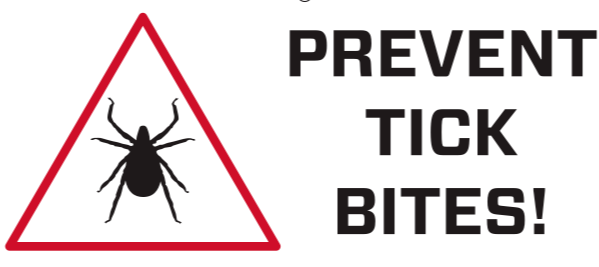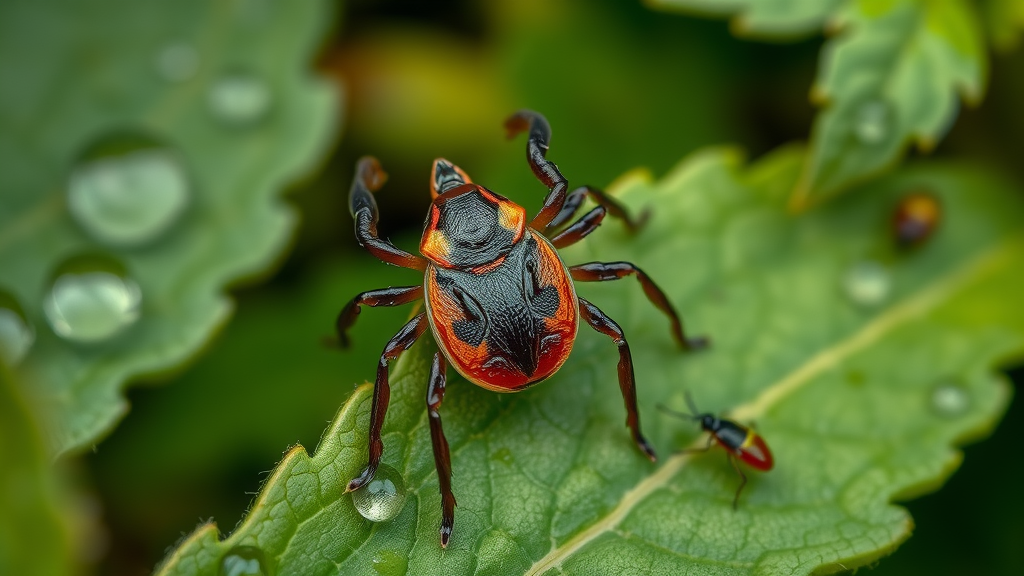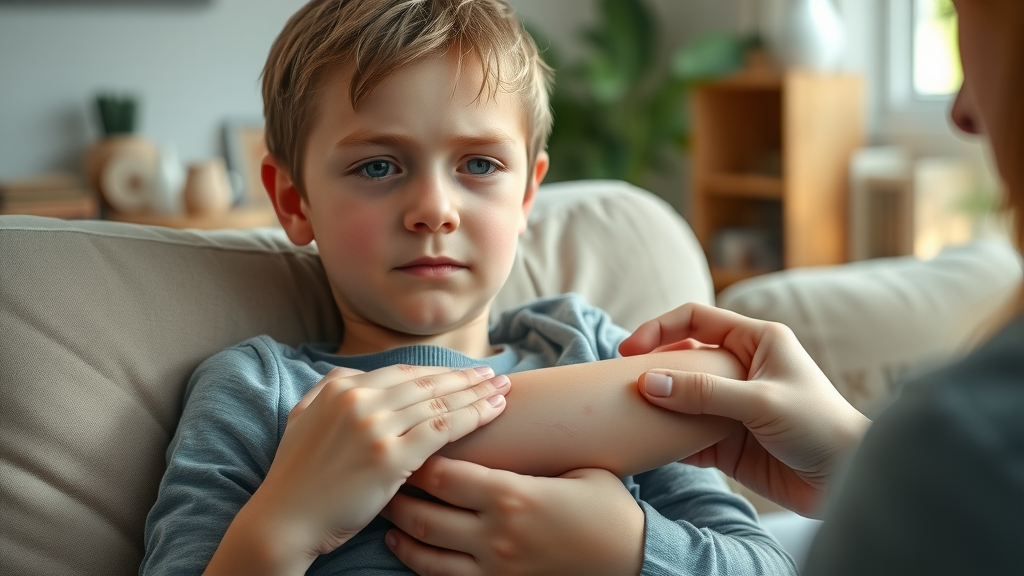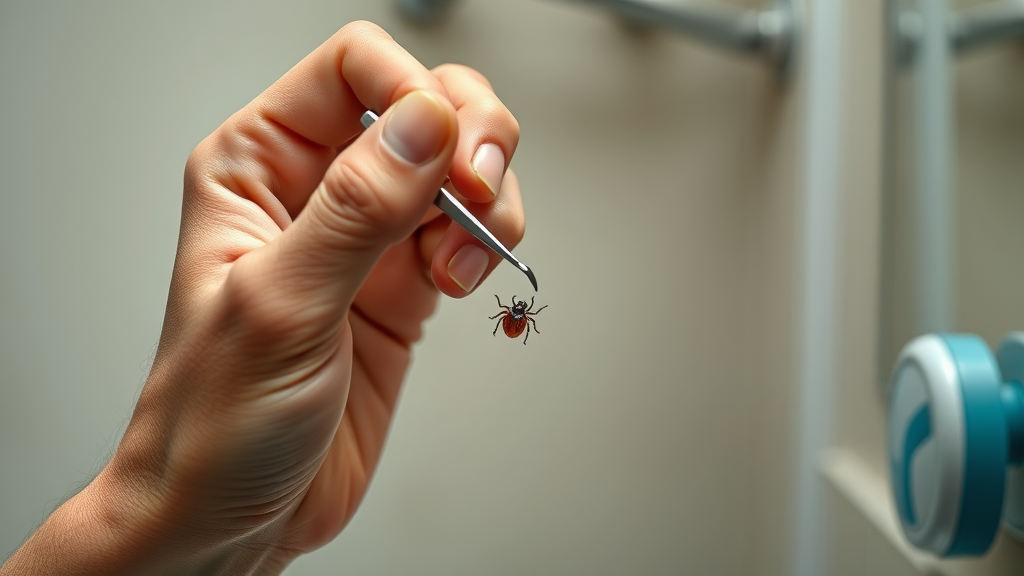Did you know tick-borne illnesses have surged by over 25% in Sussex County over the past five years? This alarming rise has made ticks an urgent public health concern for local families, outdoor lovers, and pet owners. As more residents enjoy Sussex County’s lush woodlands and scenic trails, the risk of diseases transmitted by ticks—such as Lyme disease, spotted fever, and tick paralysis—has never been higher. If you’ve ever wondered how to recognize, prevent, or respond to a tick bite, this comprehensive guide offers the latest insights, practical examples, and essential steps to keep you and your loved ones protected in Sussex County.
A Rising Threat: Understanding Tick-Borne Illnesses in Sussex County
-
Did you know that tick-borne illnesses have increased by over 25% in Sussex County in the past five years? Discover why awareness is crucial and how these diseases are transmitted by ticks locally.

Sussex County, renowned for its beautiful trails and thriving wildlife, has become a hotspot for tick-borne illnesses . The transmission of diseases like Lyme disease and spotted fever group rickettsioses is primarily linked to the proliferation of ticks such as the deer tick (Ixodes scapularis) , American dog tick , and lone star tick . Ticks thrive in wooded and grassy environments, latching onto unsuspecting hosts—including humans, pets, and wildlife. Most tick-borne diseases are transmitted by ticks during their feeding process. This happens when a tick, carrying pathogens from an infected host, attaches to the skin for a blood meal. Understanding how these illnesses spread and where ticks are commonly found in Sussex County empowers residents to take proactive steps. The upswing in local cases highlights the need for everyone—whether frequent hikers or backyard gardeners—to be vigilant, especially during warmer months when tick activity peeks.
Key Insights into Tick-Borne Illnesses: What You'll Learn
-
The latest data on tick-borne illnesses in Sussex County and nationwide
-
Common types and symptoms of tick-borne diseases, including Lyme disease, spotted fever group, and more
-
Best practices for preventing tick bites and managing exposure
-
When to seek care, and CDC-recommended steps post-tick bite
This guide delivers the most up-to-date findings on tick-borne illnesses both locally and across the United States, summarizing recent CDC and state health department reports. You’ll understand the signs, symptoms, and patterns of Lyme disease, Rocky Mountain spotted fever, relapsing fever, and tick paralysis . Whether you’re a parent worried about a sudden fever or an outdoor enthusiast wanting to safely explore, we cover the common and lesser-known symptoms to watch for. Readers will also take away proven strategies for tick prevention—everything from effective repellents to landscape management—and detailed procedures for what to do if bitten by a tick. By the end, you’ll know exactly when to consult a care provider and what to expect if you need medical assistance.
Types of Tick-Borne Illnesses Transmitted by Ticks
|
|
|
|
Comparison of Major Tick-Borne Illnesses |
|
Illness |
Main Symptoms |
Incubation Period |
Typical Treatment |
|---|---|---|---|
|
Lyme Disease |
Bullseye rash, fever, fatigue, joint pain |
3-30 days |
Antibiotics (doxycycline/amoxicillin) |
|
Rocky Mountain Spotted Fever (RMSF) |
Fever, severe headache, muscle aches, rash |
2-14 days |
Antibiotics (doxycycline) |
|
Relapsing Fever |
Recurring fever, chills, headache, muscle pain |
5-15 days |
Antibiotics (doxycycline/penicillin) |
|
Tick Paralysis |
Rapid muscle weakness, paralysis (often starts in legs) |
5-7 days after tick attachment |
Immediate tick removal, supportive care |
|
Other Spotted Fever Group Rickettsioses |
Fever, rash, headache, malaise |
2-14 days |
Antibiotics (doxycycline) |
"Lyme disease remains the most commonly reported tick-borne illness in the Northern Hemisphere." — CDC
-
Overview of Lyme disease, rocky mountain spotted fever, relapsing fever, and tick paralysis as major concerns in Sussex County.

Lyme disease , the most familiar name in tick-borne illnesses , is caused by the bacterium Borrelia burgdorferi . It’s mainly spread by the deer tick ( Ixodes scapularis ), abundant throughout wooded and brushy Sussex County landscapes. Rocky Mountain spotted fever (RMSF) and its relatives in the spotted fever group rickettsioses are also present, typically transmitted by the American dog tick (Dermacentor variabilis) or lone star tick . Less common, but equally serious, are conditions such as relapsing fever —marked by cycles of fever and chills—and tick paralysis , a rare but life-threatening reaction caused by neurotoxins in tick saliva. These diseases often present with overlapping symptoms like fever, headaches, muscle aches, and distinctive rashes, making early recognition critical. Understanding the range and risk of diseases transmitted by ticks helps residents take early, informed steps toward prevention and care.
Recognizing Common Tick-Borne Illnesses and Symptoms
Lyme Disease: Signs, Risks, and Local Trends
-
Early symptoms: rash, fever, fatigue; Why Lyme disease is linked to tick bites in Sussex County

Lyme disease represents the leading tick-borne threat in Sussex County and is closely linked to bites from the deer tick . Early symptoms commonly emerge within days to weeks and include the hallmark bullseye-shaped rash (erythema migrans) , fatigue, mild to severe headaches, muscle aches, joint pain, and fever. Not all cases develop the classic rash, making it vital to consider any unexplained symptoms following a tick bite. If left untreated, Lyme disease can progress to neurological problems, joint swelling, facial palsy, and long-term fatigue. The increasing prevalence of Ixodes scapularis (deer tick) in suburban yards and local parks has heightened the risk in Sussex County, especially for children, hikers, and pet owners.
Local health departments report that most Lyme disease cases are tied to outdoor activities in tall grasses, wooded areas, or even backyard gardens where ticks are prevalent. Early intervention with antibiotics is highly effective but requires prompt recognition of symptoms and action.
Rocky Mountain Spotted Fever and Spotted Fever Group
-
Key symptoms: rash, severe headache, muscle pain; Geographical spread of spotted fever in Sussex County
Rocky Mountain spotted fever (RMSF) and other spotted fever group rickettsioses are spread by the American dog tick and lone star tick . RMSF progresses rapidly and can be fatal if not treated quickly—prompt recognition makes all the difference. Early signs include sudden high fever, severe headaches, muscle pain, and a rash that may appear a few days later, often starting at the wrists or ankles.
Although its name suggests otherwise, RMSF is found throughout the United States, including Sussex County, and cases have increased due to climate shifts and rising tick populations. Individuals exposed to brushy or wooded habitats are especially vulnerable. Spotted fever cases are also associated with hiking, camping, and gardening, where ticks can attach undetected. Immediate treatment with doxycycline is critical for recovery. Understanding these symptoms—and not delaying care in the face of fever and rash—can save lives in our local community.
Tick Paralysis and Other Notable Tick-Borne Diseases
-
How tick paralysis presents; Associated risks with the spotted fever group and relapsing fever
Tick paralysis is a rare condition brought on by neurotoxins released in the saliva of certain female ticks, such as the American dog tick . Symptoms can develop within days of tick attachment and typically start as weakness or loss of coordination in the legs, progressing rapidly to full paralysis unless the tick is removed. Recovery is usually swift once the tick is gone, but delayed removal can be life-threatening—especially for young children.
Other notable diseases include relapsing fever and less common spotted fever group illnesses, which mimic symptoms of the better-known tick-borne diseases: recurring fevers, chills, headaches, muscle aches, and fatigue. In Sussex County, these exist primarily in wooded and brushy environments, making awareness and early detection critical. In all cases, consulting a healthcare provider promptly after suspicious symptoms or after being bitten by a tick ensures the best possible outcome.
Prevention and Protection Against Tick Bites and Tick-Borne Illnesses
-
Best practices for preventing tick bites when outdoors
-
List: Effective tick repellents, suitable clothing, and landscaping tips to reduce tick exposure

The best defense against tick-borne illnesses is making tick prevention part of your daily routine. When heading outdoors in Sussex County—especially in grassy, brushy, or wooded areas—wear long sleeves, long pants tucked into socks, and closed-toed shoes to limit skin exposure. Use EPA-registered tick repellents containing DEET, picaridin, or permethrin (on clothing) for added protection. After outdoor activities, perform thorough body checks, paying close attention to warm, hidden areas like behind knees, underarms, and around the scalp.
-
Choose repellents : Look for products labeled for ticks with active ingredients like DEET (20–30%), picaridin (20%), or permethrin (on clothing and gear).
-
Dress defensively : Wear light-colored clothing to spot ticks easily, and keep shirts tucked in.
-
Manage your yard : Keep grass short, clear brush and leaf litter, and create barriers of mulch or gravel between lawns and wooded edges. Remove stacked wood and maintain fences to discourage animals—such as deer or rodents—that may host ticks.
-
Steps to take immediately after a tick bite to lower the risk of tick-borne illnesses
If you find a tick attached, acting quickly to remove it properly reduces your odds of contracting a disease caused by an infected tick. Use fine-tipped tweezers, grasp as close to the skin as possible, and pull upward with steady, even pressure—never twisting or crushing the tick. Wash the area thoroughly with soap and water and monitor for symptoms over the next 30 days. Remember, #1 way to stop many tick-borne diseases is to remove the tick as soon as possible, and not all ticks are infected—but caution is always best.
What to Do After a Tick Bite: Expert Guidelines for Sussex County Residents
-
Step-by-step checklist: removing a tick and monitoring for symptoms

-
Remove the tick immediately using fine-tipped tweezers. Grasp the tick as close to the skin's surface as possible and pull upward, applying steady pressure.
-
Do not twist or jerk the tick as this can cause mouth-parts to break off and remain in the skin.
-
Wash your hands and the bite area with soap and water or use an alcohol-based sanitizer.
-
Save the tick (sealed in tape or a small bag) for identification if symptoms develop.
-
Record the bite date and monitor your health for the next 30 days, noting any fever, rash, or body aches.
-
When to contact a care provider or seek further medical help. Highlight CDC recommendations.
According to CDC recommendations , contact a care provider immediately if you develop symptoms such as rash, fever, headache, muscle aches, or swollen joints following a tick bite—even if the bite occurred weeks earlier. Preventive antibiotics may be considered in certain circumstances, such as the bite of an identified deer tick attached for 36+ hours. Don’t wait for severe symptoms; early treatment is critical with diseases like rocky mountain spotted fever and Lyme disease. If you’re unsure about the tick species or symptoms, reach out to a healthcare provider for guidance and testing.
People Also Ask: Insights on Tick-Borne Illnesses
What are the most common tick-borne illnesses?
-
Lyme disease, rocky mountain spotted fever, tick paralysis, relapsing fever, and other spotted fever group infections are commonly diagnosed in Sussex County and surrounding regions.
In Sussex County, residents encounter a range of tick-borne illnesses. Most notably, Lyme disease leads the list, followed by Rocky Mountain spotted fever , relapsing fever , and tick paralysis . Tick exposures can also result in less common conditions in the spotted fever group rickettsioses, each with unique concerns and symptoms. Understanding the risks in your region is essential to seeking treatment early and avoiding complications from these often-preventable diseases.
What are the chances of getting sick from a tick bite?
-
Chances vary based on tick type, how long the tick is attached, and prompt removal. Sussex County experts estimate a 1–5% transmission rate for Lyme disease after a tick bite, especially if prompt removal occurs.
While the mere presence of a tick bite does not guarantee illness, the risk varies considerably. Key factors include the tick species, whether it was infected, and especially how long it remained attached. Studies show that deer ticks typically must feed for 36 hours or longer to transmit Lyme disease—prompt removal keeps the odds low. In Sussex County, estimates suggest a 1–5% transmission rate for Lyme disease after a single tick bite, dropping substantially if the tick is removed in the first 24 hours. Consistent use of prevention strategies significantly reduces your risk.
When is it too late to treat a tick bite?
-
It is typically never too late to treat tick-borne illnesses; however, early intervention is key. Delays in seeking help after a tick bite can increase risk of severe symptoms or complications with diseases like Rocky Mountain spotted fever.
It’s rarely too late to treat tick-borne illnesses; the right time to act is as soon as you recognize symptoms. Early intervention—especially during the first few days of symptoms—results in the best outcomes. However, prompt action is more urgent with certain diseases, like rocky mountain spotted fever , which can become life-threatening without timely treatment. If you or a loved one start to feel unwell after a tick bite, don’t delay: reach out to a care provider and advocate for evaluation and, if needed, antibiotics.
What are the CDC guidelines for tick bites?
-
The CDC encourages immediate tick removal, watching for symptoms of tick-borne illnesses, and consulting a care provider if signs of illness appear. Sometimes preventive antibiotics are recommended based on circumstances.
The CDC clearly states: remove the tick as soon as possible, clean the area, and closely monitor for symptoms—like fever, rash, muscle aches, or neurological changes—after exposure. If symptoms develop or if there is a concern about the tick species (such as deer or wood tick), notify a care provider. Preventive antibiotics are sometimes prescribed for high-risk exposures. Always consult your healthcare provider for advice specific to your situation or if you were bitten by a tick that may be carrying Lyme disease or another serious illness.
Best Practices: Responding to Tick Bites and When to Consult a Care Provider
-
List: Warning signs that should prompt immediate consultation with a care provider or visit to the doctor after a tick bite
-
Tips for tracking tick-borne illnesses symptoms and documenting tick encounters for effective care

-
Fever or chills appearing days to weeks after a tick bite
-
Rash (especially a bullseye pattern or widespread spots)
-
Severe headache, neck stiffness, or muscle pain
-
Facial drooping or limb weakness (possible sign of tick paralysis or neurological Lyme disease)
-
Unusual fatigue, night sweats, or joint aches
If any of these symptoms appear after being bitten by a tick—even if you don’t recall the bite—consult a healthcare provider without delay. Keep a record of the encounter, saving the tick for identification, and date of removal. Take photographs of any rash or swelling, and document symptoms daily. Clear, consistent documentation aids your care provider in diagnosing and treating potential tick-borne illnesses rapidly and accurately.
FAQs on Tick-Borne Illnesses, Tick Bites, and Prevention
-
Are there vaccines for any tick-borne diseases?
At present, there is no widely available vaccine for Lyme disease or most tick-borne illnesses in the United States. However, research and clinical trials are underway, so this could change in the future. Protection still relies on preventing tick bites and prompt removal. -
Can I get tick-borne illnesses from pets?
While tick-borne illnesses like Lyme disease are not directly transferred from pets to people, dogs and cats can bring ticks into your home after outdoor adventures. Regular tick checks and approved tick preventives for pets are essential. -
Which ticks in Sussex County are most dangerous?
The deer tick (Ixodes scapularis) , American dog tick , and lone star tick are the primary vectors for tick-borne illnesses in Sussex County. These carry risks of Lyme disease, rocky mountain spotted fever, and tick paralysis, respectively. -
What is the safest way to remove a tick?
Use fine-tipped tweezers to grasp the tick close to the skin, pulling upward with steady, even pressure. Don’t twist or crush the tick. Clean the bite area and your hands thoroughly and save the tick for identification if symptoms arise.
Key Steps to Stay Safe from Tick-Borne Illnesses in Sussex County
-
To minimize risks: Practice awareness, preventive measures, and immediate action if bitten.
-
Stay up-to-date with health alerts and tick-borne illness trends in your local area.
-
Consult reputable resources like the CDC and your care provider for the latest advice.
Take action now—equip yourself, your family, and your community with the knowledge and tools needed to reduce the risk of tick-borne illnesses. Vigilance and rapid response to tick bites are the best defenses in Sussex County's expanding tick habitat.
 Add Row
Add Row  Add
Add 




Write A Comment